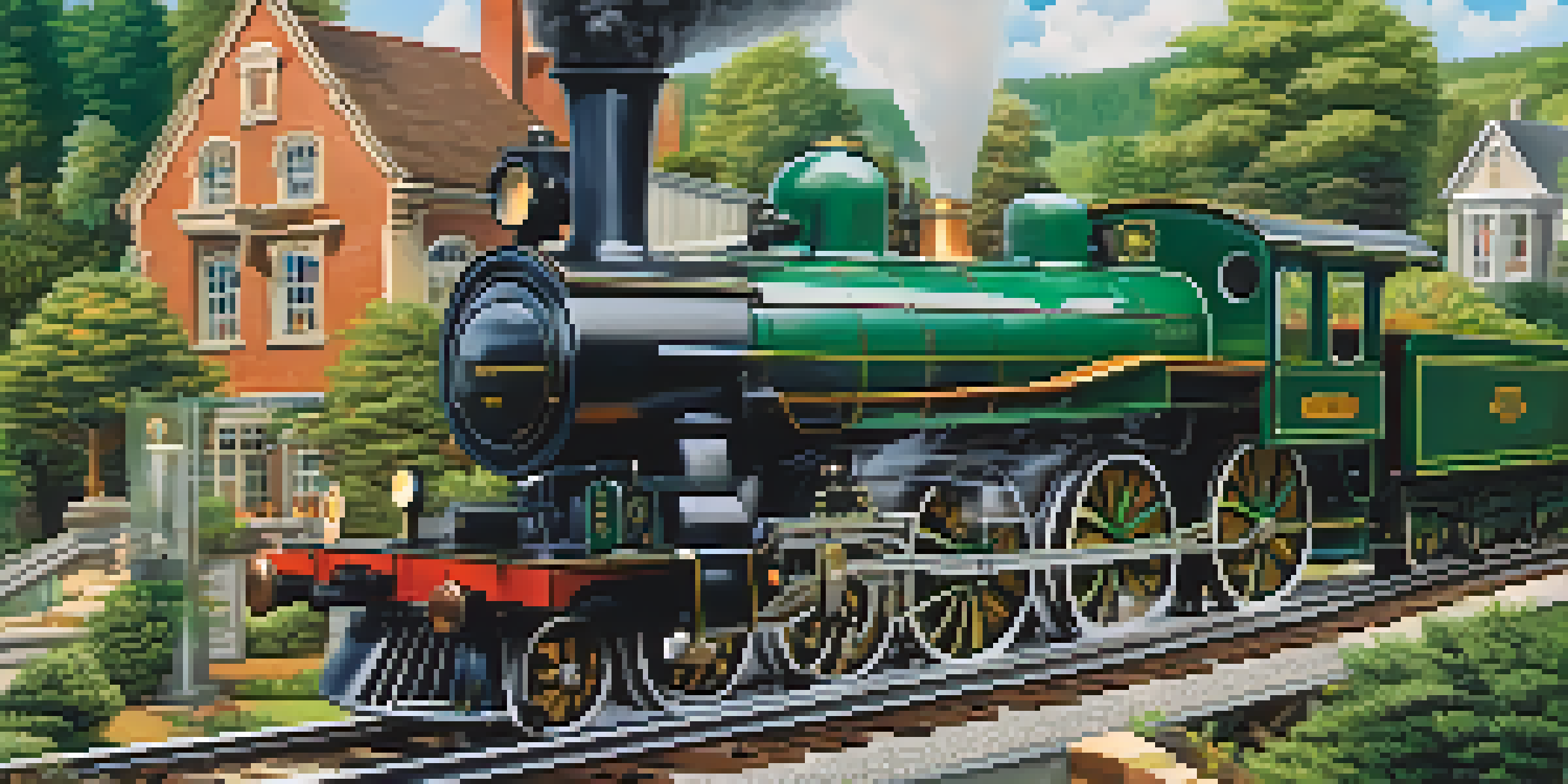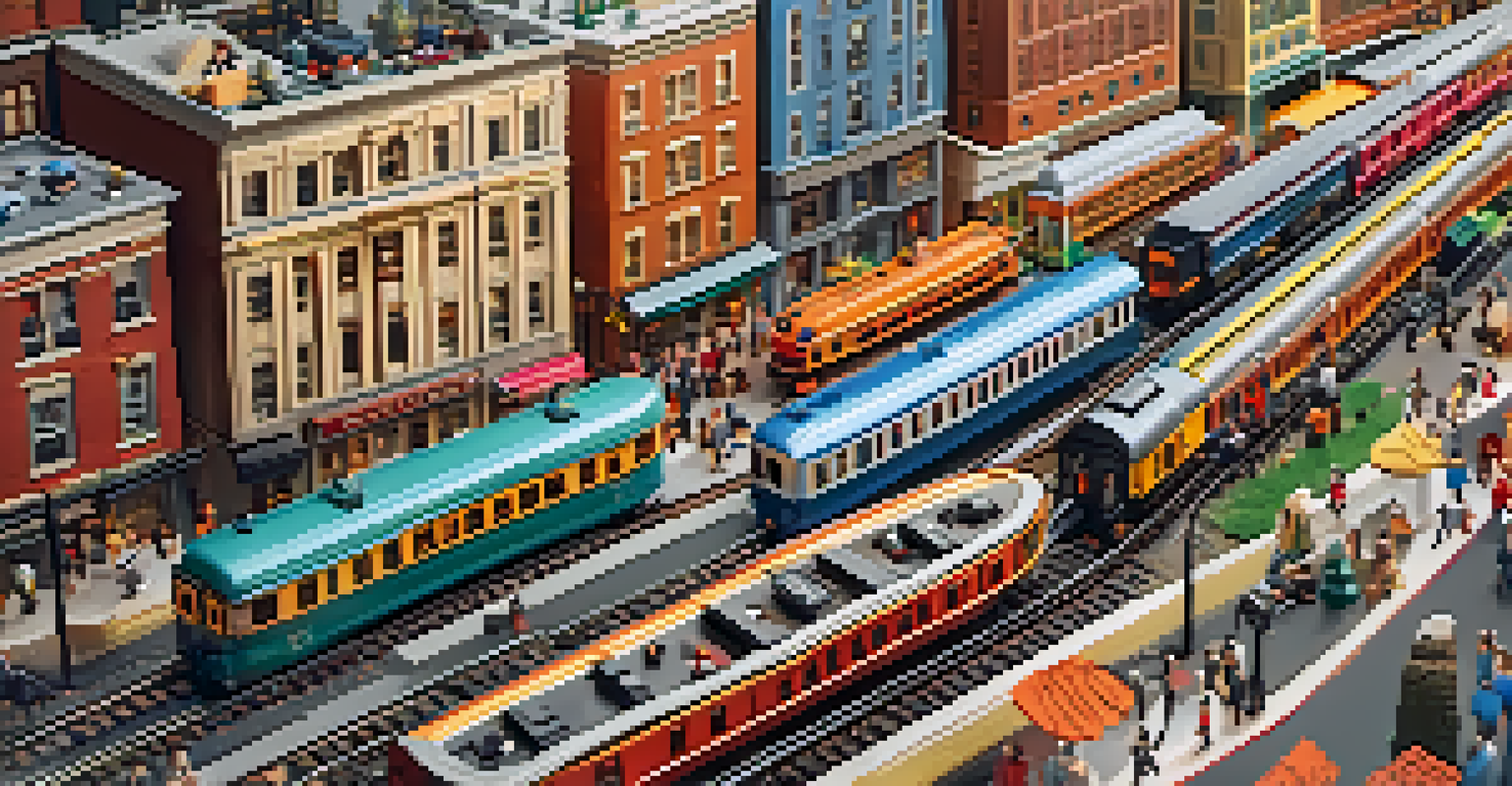Incorporating Sound Systems in Model Trains

The Importance of Sound in Model Train Experiences
When it comes to model trains, the visuals are often the first thing that catches our attention. However, the addition of sound can elevate the experience to a whole new level. Just imagine the roar of an engine or the whistle of a train as it chugs along the tracks; it brings your miniature world to life.
Sound is the echo of the soul, and in the world of model trains, it brings the miniature landscape to life.
Sound adds an immersive layer that visuals alone cannot provide. It allows enthusiasts to create a more authentic atmosphere, transporting them into the heart of a bustling railway. When you hear the sounds of trains, it’s as if you’re standing right beside the tracks.
Incorporating sound systems into your model trains creates a multi-sensory experience. This not only enhances enjoyment but also engages the audience on a deeper level, making your setup more captivating and memorable.
Types of Sound Systems for Model Trains
There are several types of sound systems available for model trains, each with its own features and benefits. Digital Command Control (DCC) sound systems are quite popular because they allow you to control multiple trains and sounds independently. This means you can have different sounds for each train, creating a unique experience.

Another option is using sound modules, which are standalone units that can be triggered by specific actions, like the press of a button or the movement of the train. These systems are often easier to install and can be a great choice for beginners looking to add sound without diving into complex setups.
Sound Enhances Model Train Realism
Incorporating sound into model trains creates a more immersive and authentic experience that visuals alone cannot provide.
Lastly, some enthusiasts opt for custom-built sound systems, which allow for even more personalization. This can involve integrating speakers into the model or using Bluetooth technology to stream sound effects directly from a smartphone, providing endless possibilities for creativity.
Choosing the Right Sound for Your Model Trains
Selecting the right sounds for your model trains is crucial for achieving the most realistic experience. Consider the type of trains you have—steam engines, diesel locomotives, or electric trains—and choose sounds that reflect their distinctive characteristics. For instance, a steam engine might benefit from sounds of chuffing and whistle blasts, while a diesel might need a throaty rumble.
The details are not the details. They make the design.
Additionally, think about the setting of your model train layout. Are you recreating a bustling city station or a serene countryside? The ambiance can be enhanced with background sounds, like chatter from passengers or the distant sound of a train whistle echoing in the hills.
Don’t forget to incorporate sound effects that match specific actions. For instance, when your train starts moving, you can have the sound of wheels on tracks or brakes releasing. This attention to detail can significantly improve the authenticity of your train experience.
Installing Sound Systems in Model Trains
Installing a sound system in your model train can seem daunting, but it’s quite manageable with the right approach. Start by choosing a suitable sound system based on your train’s scale and your technical comfort level. Most systems come with detailed instructions to guide you through the process.
Begin by preparing your model train, which may involve opening the shell and identifying the right spots for speakers and wiring. It’s important to ensure that the installation doesn’t interfere with the train’s mechanics. A little planning goes a long way in achieving a seamless integration.
Choosing the Right Sound Matters
Selecting sounds that reflect the specific characteristics of your trains and setting enhances the overall ambiance and enjoyment.
Once everything is in place, test the sound system before finalizing the installation. This allows you to make adjustments and troubleshoot any issues. By taking your time during the installation process, you’ll ensure a smooth and successful outcome.
Programming Your Sound System for Optimal Performance
After installation, programming your sound system is the next step to achieving the best performance. Many modern sound systems allow for customizable settings, enabling you to adjust volume levels, sound effects, and even timing to match your train's movements. This means you can create a truly unique sound profile for each train.
If you're using a DCC system, familiarizing yourself with the programming interface will be beneficial. You can assign different sound profiles to different locomotives, ensuring that each train sounds distinct as it travels through your layout. It’s akin to giving each train its own personality.
Don’t hesitate to experiment with different settings and sounds until you find what works best for your layout. The beauty of model trains is in the details, and this is where programming can really shine, making your setup not only visually stunning but also audibly impressive.
Maintaining Your Sound System for Longevity
Like any electronic component, your sound system requires regular maintenance to ensure it continues to function well. Start by keeping the sound speakers clean and free from dust, as buildup can muffle sound quality. A gentle wipe with a soft cloth can do wonders.
Regularly check the connections and wiring to prevent any loose contacts that might affect performance. This is especially important if your model trains are frequently taken out for shows or exhibitions. Keeping everything secure will save you headaches down the road.
Community Resources Boost Creativity
Engaging with online forums and local clubs offers valuable insights and inspiration for enhancing your model train sound systems.
Lastly, consider updating the sound profiles or effects as you expand your collection. Many manufacturers release new sounds that can enhance your setup. Staying up-to-date ensures that your sound system remains fresh and engaging.
Exploring Community Resources for Sound Ideas
One of the best ways to enhance your model train sound system is by tapping into community resources. Online forums and social media groups dedicated to model railroading are treasure troves of information. Here, enthusiasts share their experiences, tips, and even sound files that you can use for your own setup.
You can also find tutorials and videos that guide you through various aspects of sound integration. These resources can help demystify the process, making it easier to implement new ideas and techniques. Plus, connecting with fellow hobbyists can provide inspiration and spark creativity.

Don’t underestimate the power of local clubs or meet-ups. Engaging with others who share your passion can lead to new friendships and collaborations. Whether it's discussing sound choices or sharing the latest tech, community engagement can greatly enhance your model train experience.